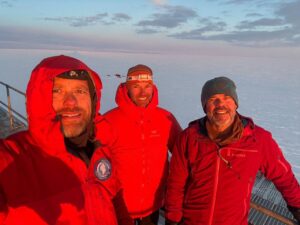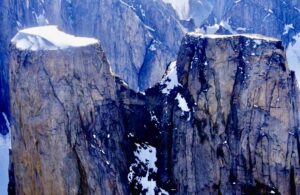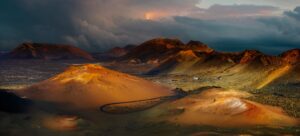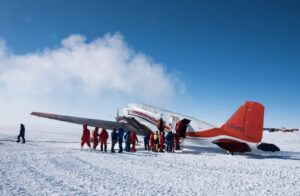Two years after (mostly) crossing Canada from north to south with Guillaume Moreau, Nicolas Roulx is ready for another mammoth Canadian crossing.
During their 2021 expedition, only Roulx and Moreau completed the full 7,600km journey, but a variety of friends joined them during sections. The latest expedition follows a similar framework. This time, Roulx and Catherine Chagnon will be the constants during a six-month, 6,500km west-to-east journey entirely north of the 60th parallel.
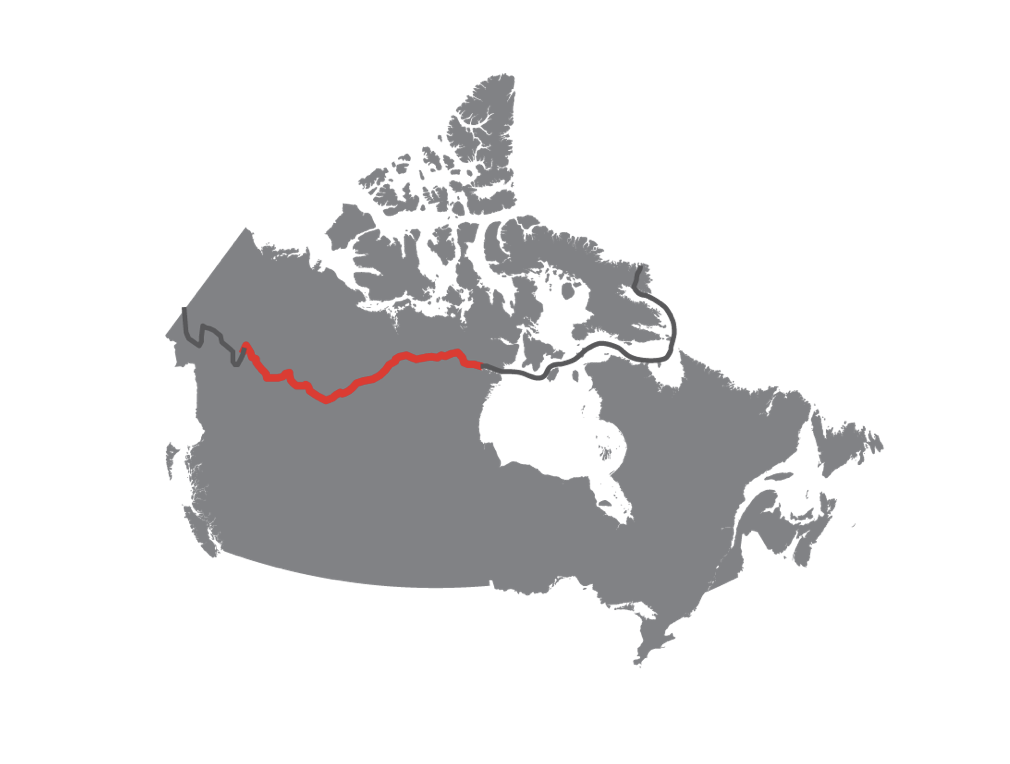
The full 6,500km route. The section in red highlights the canoe section. Photo: AKOR Expedition
Cycling starts April 18
Chagnon was also involved in the 2021 journey. In fact, she effectively saved the expedition when team member Philippe Voghel-Robert unexpectedly left midway through the canoe section. At incredibly short notice, Chagnon (who is Moreau’s girlfriend) flew out to Baker Lake and stepped in as their fourth paddler.
This time, the roles will reverse, with Chagnon aiming to complete the whole journey while Moreau will only join the canoe section. “I think we created a monster,” Roulx joked when I spoke to him on the phone.
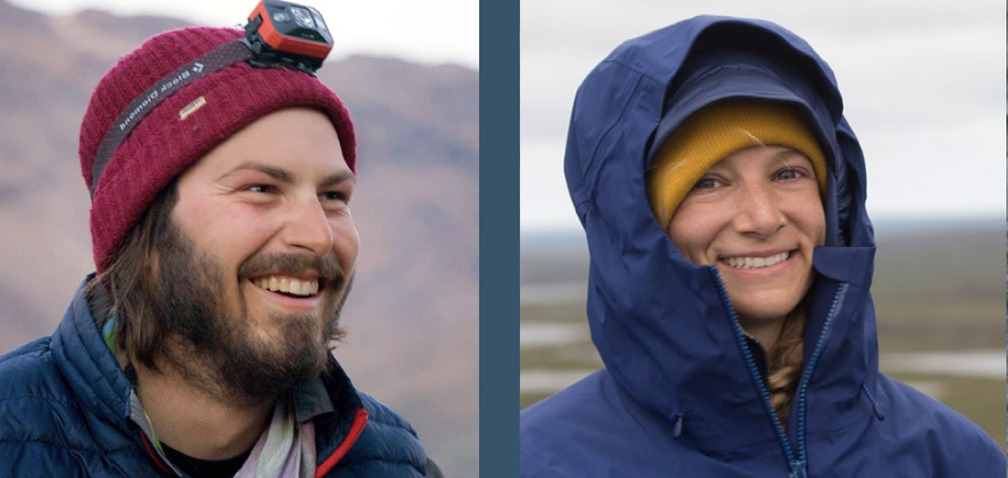
Nicolas Roulx and Catherine Chagnon. Photo: AKOR Expedition
Chagnon and Roulx will set off from the Alaska-Yukon border on April 18 by bicycle. They will mainly cycle gravel roads, en route to the Northwest Territories. They hope to only be in the saddle for a couple of weeks, before switching to their preferred discipline: canoeing.
“I’m looking at the cycling section as a good warm-up,” Roulx said. A warm-up is particularly important for Roulx, who suffered a nasty accident not long after the last expedition. He broke his leg while bouldering and has endured a long road to recovery.
A year on crutches
“I spent about a year on crutches and with a cane,” said Roulx. “I had to learn to use my leg again. I still have some limitations and there’s nerve damage in my left foot. I can’t lift my foot up. I need a brace to walk and run. I know I’ll probably have to spend the rest of my life with that brace. It’s not that bad, it’s just disappointing to be 30 years old and stuck with that.”
As well as monitoring how Roulx’s leg holds up, they’ll need to watch out for bears. They are pedaling through grizzly territory just as they emerge from hibernation. Though they have some polar bear experience from 2021, grizzlies behave very differently.
In early May, they will reach the lakes of the Northwest Territories, where Moreau, Dominic Roulx (Nicolas’ brother), and Laurence Garceau join them for various lengths of a three-month, 2,800km canoe journey.
The lakes might not have melted yet, which would require some of the “experimental canoeing” from previous expeditions. That suggests lots of portaging, dragging canoes over ice, and frustratingly little paddling.
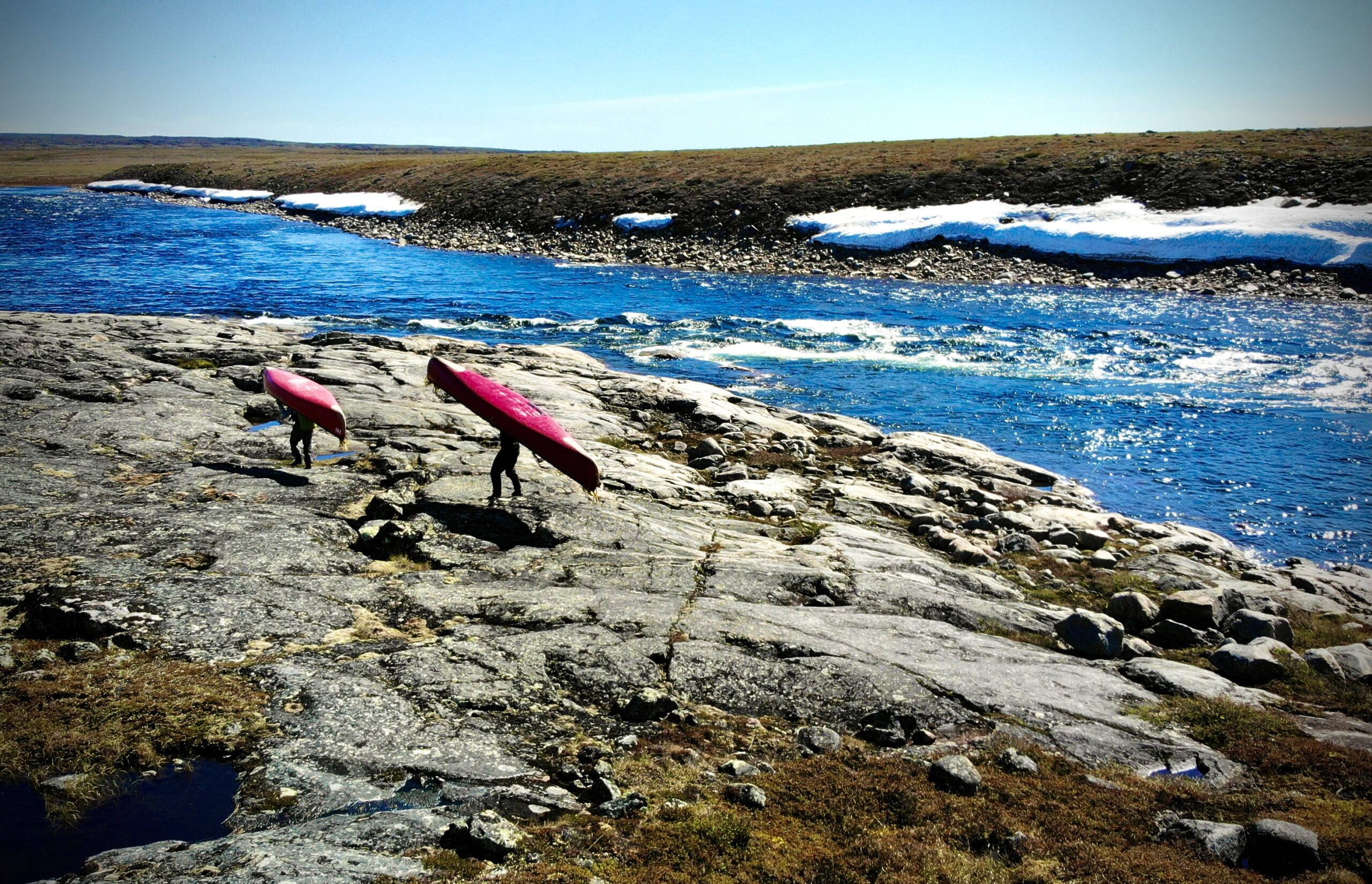
Some experimental canoeing. Photo: AKOR Expedition
However, they hope the ice won’t be too big a problem this time. “It’s an El Nino year, so it should be a little warmer,” Roulx explained.
It is worth risking an early start to avoid the worst of the spring floods on the Little and South Nahanni rivers. After these, it’ll be onto the Mackenzie River and then to Great Slave Lake before they eventually arrive at Baker Lake via the Thelon River in early August.
From cycling and canoeing to sailing
Baker Lake, near the geographic center of Canada, is where a complex journey gets logistically more complex. A month before they arrive at Baker Lake, a sailboat will set off from Quebec, aiming to meet them there. That sailing crew then flies home and another takes over to ferry Roulx and Chagnon across Hudson Bay to Pangnirtung on Baffin Island.
Sailing to Baffin Island should take around three weeks and will represent quite a change of pace for Roulx and Chagnon.
The switch from self-propelled to sailing is driven by the duo’s route choice.
“We see a line and then ask: How can we achieve that line in a single push? You look at the seasons and what transportation you need to complete the route,” Roulx said. “You can’t go across Hudson Bay in a canoe, you’d have to go around the edge and it would take another three months. An eight-month trip is very difficult on the body. [Roulx and Moreau’s 2021 north-to-south took eight months – this expedition should take six.] You can’t keep doing those trips forever unless you’re Borge Ousland or Mike Horn!”
From Pangnirtung, Chagnon and Roulx will continue on foot, hiking for 10 days to Qikiqtarjuaq on the east coast of Baffin. Simultaneously, a third crew arrives to take the sailboat back to Quebec.

Guillaume Moreau and Catherine Chagnon in 2021. Photo: AKOR Expedition
More people, more gear, more money
The combination of multiple disciplines and, in particular, a borrowed boat, makes this expedition as much a logistical challenge as a physical one. Their estimated budget is $220,000. But Roulx sounds at peace with the many moving parts.
“Of course, we have a Plan B and a Plan C, but I don’t think we should spend too much time worrying about different scenarios. Maybe we were too prepared on the last trip, and still, nothing happened as it was supposed to. Be prepared, be in good shape, and make sure everything is ready, but you’ll have to improvise anyway.”

